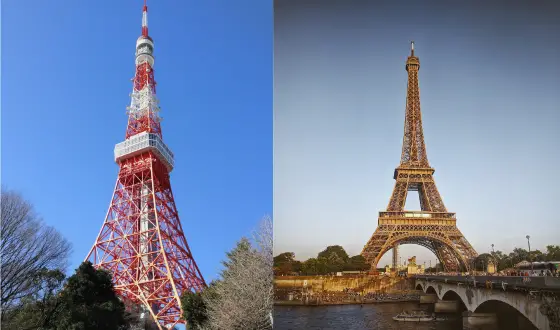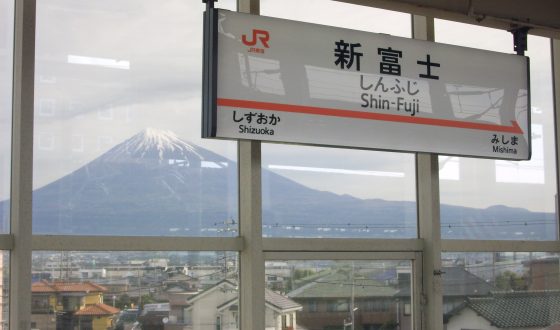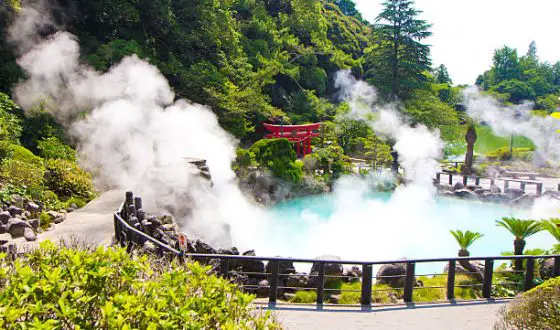Amazing Facts About Shopping In Japan
Japanese cosmopolitan and chaotic cities promise visitors the most intriguing shopping paradises in the world. Shopping in Japan has all that you’re looking for. From high-end fashion boutiques to Japanese miscellaneous goods and sundries, a wealth of stores for all budgets is awaiting you.
Tips for shopping in Japan
Types of shop
There are various types of shops in Japan ranging from shopping districts, shopping centers to covered shopping arcades and in extensive underground malls. For a shopping spree, you will be pleased with the selection of large big box retailers, outlet malls and the famous 100 yen shops.
-
Department stores
The very first department stores are Matsuzakaya and Mitsukoshi which were originally opened as kimono fabrics dealers 400 years ago. Nowadays, Seibu, Tokyu, Odakyu, Takashimaya, Daimaru, Isetan and Keio are the biggest names opening in all major Japanese cities. Their products vary from food to clothing and jewelry, including both domestic and foreign brands. Along with the costly price is a guarantee of a higher level of service and product’s quality. Try working your way up, from the basement food level to the many retail shops, to the restaurants, many of which have great views on the top floors.
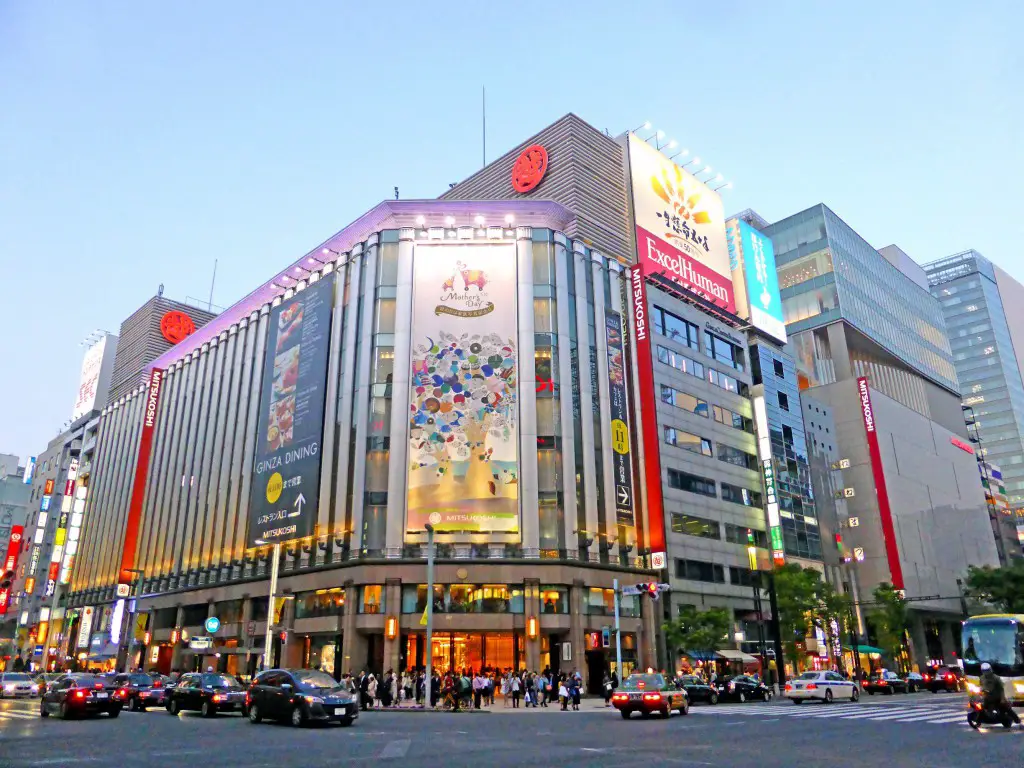
Mitsukoshi Ginza is conveniently connected to Shinjuku station
-
Electronics stores
Japanese well-known electronic stores are located at Tokyo’s Akihabara, Shinjuku and Ikebukuro districts, as well as Osaka’s Den Den Town. You can find almost every electric product in those towns, from computers, cameras, cell phones, stereos to home appliances, toys, movies, games, gadgets and accessories. Some of the big players could be named as Yodobashi Camera, Bic Camera and Yamada Denki. These chains provide shoppers with well-stocked merchandise at discounted prices.
-
100 Yen shops
A common type of Japanese shop that stocks a wide range of products from clothing to stationery, housewares to food for only 100 yen per item. This concept of store has a history dating back to the Edo period, when shops selling items for 19 mon and later 38 mon were popular. Today, the four major chains are Daiso, Seria, Watts and Can Do, which combined have over 5,500 locations across Japan. Larger items, like furniture and tools, may also cost more yet are still relatively affordable, usually costing less than 1000 yen.
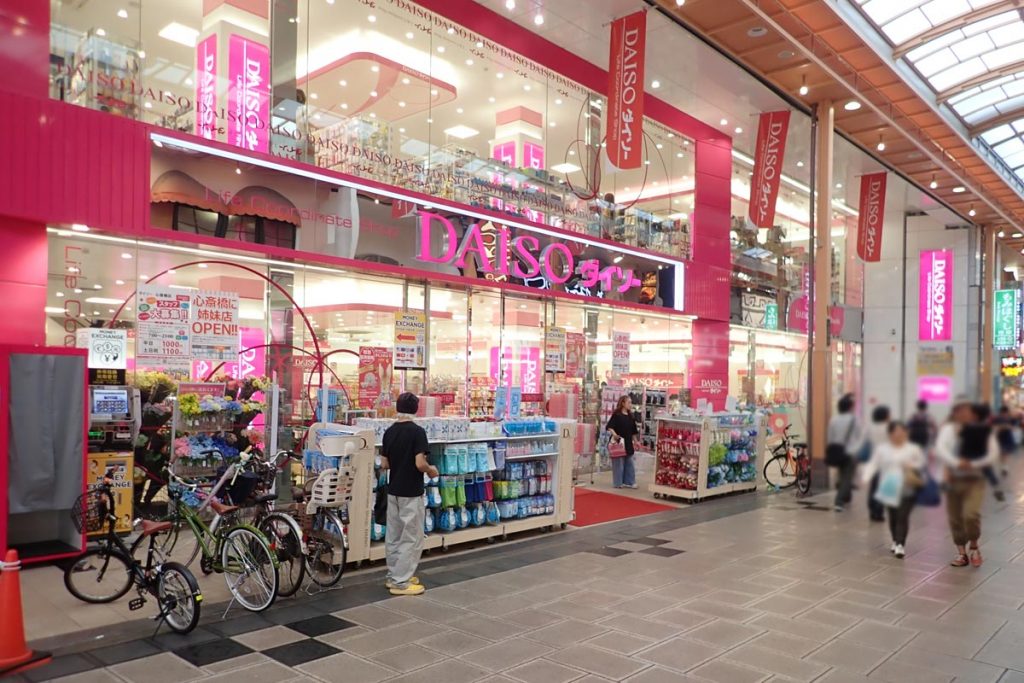
Each item is priced at precisely 100 yen that corresponds roughly to one US dollar, making these shops a great source for travelers and residents on a budget
-
Convenience stores
Over 50,000 stores opened 27/4, Japanese convenience stores (known as konbini) offer virtually everything you need incredible services that make them truly convenient. Here you can purchase not only food and drinks, daily necessities but also seasonal and limited-time goods. In addition, customers can use free and clean restrooms, ATMs, copy machine, reserve tickets for shows and museums, send letters and packages, and much more! The three most popular convenience store chains are Seven-Eleven, Lawson, and FamilyMart. Keep in mind, some of the offerings vary by store and region.
-
Shopping malls
Shopping malls are available both in the large cities and in the countryside, including clothing stores, food courts, movies theaters, hotels and video game arcades. Many of them are around or under major railway stations or connected to high-rise buildings. In some cases, multiple malls are interconnected, creating huge networks. Not surprisingly, Tokyo and Osaka have some of the most extensive complexes.
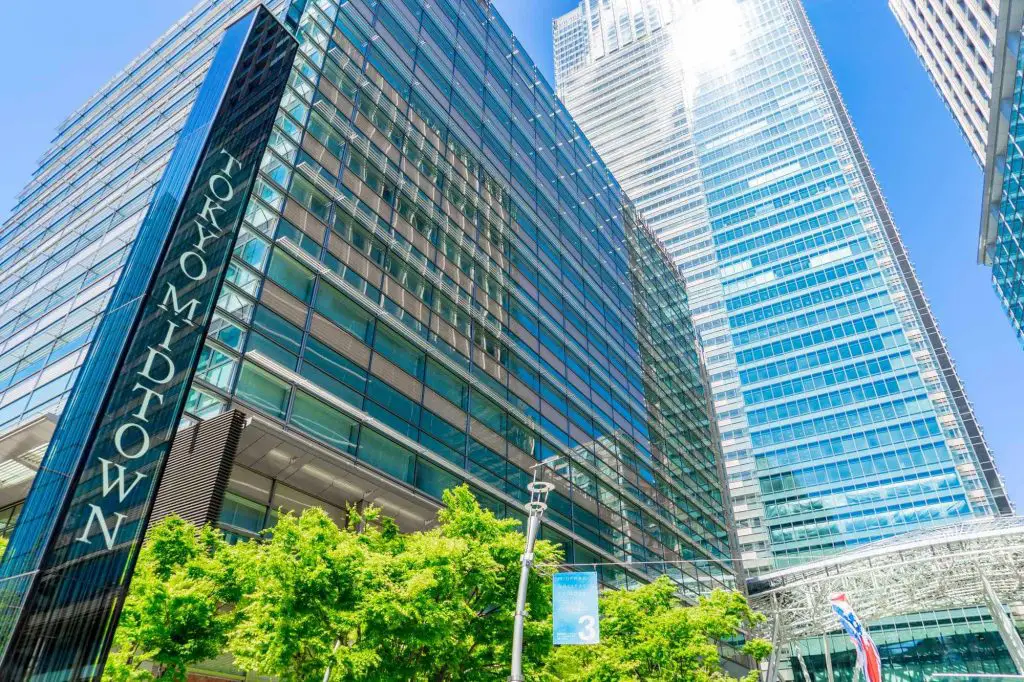
Roppongi’s Tokyo Midtown is a great example of one such complex and is the tallest building in Tokyo, home of the Ritz-Carlton and Suntory Museum of Art
-
Shopping arcades
Unique, nostalgic and hustling are what people think about Japanese shopping arcades. They are narrow shopping streets made up of dozens of small to medium sized stores and restaurants. Though the trade is not as roaring as in the past, it still lives on as the core of many people’s lives.
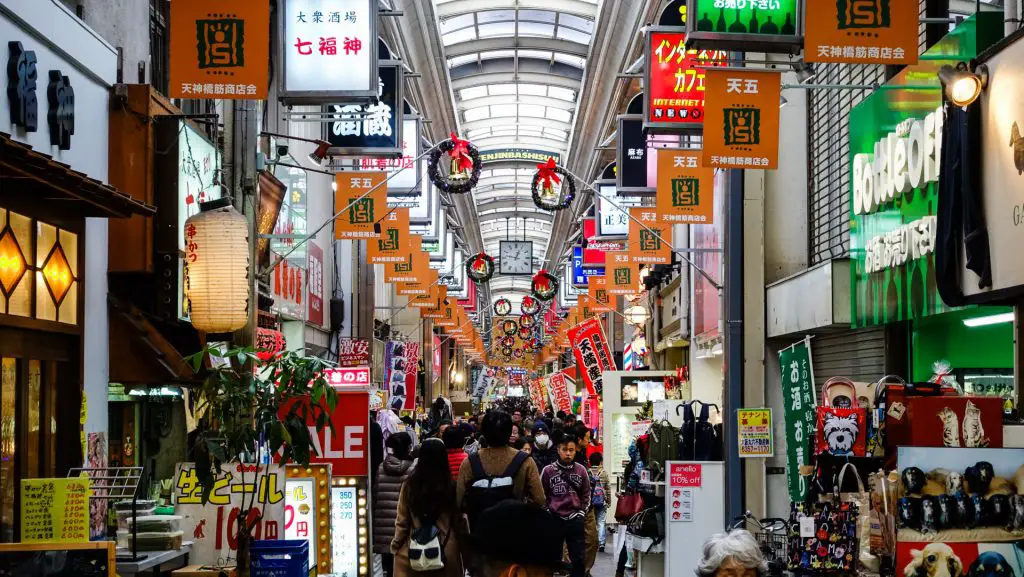
Every shōtengai is a breathing part of local community and has its own story to tell
Japanese shopping arcades are home to game arcades, photo booths, tsukemono stalls, and general produce. Osaka, Sendai and Takamatsu have some of the country’s longest arcades. On rainy days, people squeeze together over sodden streets as they all open up their umbrellas. It would be perfect to drop in a coffee shop and relax as the rest of the shoppers continue on by.
-
Supermarkets
Japanese supermarkets are not much different from other parts of the world. Supermarkets are where you buy a dozen of everyday ingredients from branded to cheaper ‘off brand’ products. As a result, it’s more budget-friendly compared to convenience stores. There is an abundant of supermarkets in the suburbs and medium sized cities and towns, but it’s quite hard to find ones in the city center.
In a country where life is filled with artificial technologies, humanoid robots and self-service scanning machines take over the job of staff at many counters. In most cases, shopping bags are available but they will cost you a few more yen. Among the largest chains are Ito Yokado, AEON, Daiei, Izumi and the Tokyu Store.
-
Flea markets
If flea markets are your thing, then Japan has some excellent ones that are worth checking out. Those soulness stores are definitely paradises for cheapo with all types of new and used art, secondhand fashion, antiques, jewelry, coffee presses and random military stuff. They open in one of the parks or parking lots just about every Saturday and Sunday. You can explore incredible flea markets around Kyoto’s Toji Temple and Kitano Tenmangu Shrine, as well as at Tokyo’s Meiji Jingu Gaien and Yoyogi Park.
-
Outlet malls
Usually located around airports and along expressways, outlet malls feature unique food options and brand name goods with better prices than regular retail shops. They are a great choice for those looking for fun activities and leisurely shopping experiences. Over 30 are found around Japan, often outside of the bustling city centers but still closely connected to transportation hubs. One of the largest and most popular outlet malls is the Gotemba Premium Outlets.
SEE MORE:
How to shop
Shopping in Japan is usually a pleasant experience. Although foreign language services are rarely available, sales staff are generally polite, friendly and attempt to provide a high level of customer service.
Before you set out, bear in mind that Japanese stores open on the late side. The earliest open around 10 a.m., but some won’t open until lunchtime, so check before you head out or plan for an afternoon trip. Closing hour is 10pm and it could be earlier for smaller shops. Most stores close one day a week or one day a month.
Consumption Tax
Normally every shop will charge you 8% to 10% of the total bill for tax. Be aware that some shops are displaying pre-tax prices. Tax free shopping is offered only at licensed stores/ malls for bills which are over 5000 yen on one calendar day. For that, showing your passport is necessary. At many shops, you’ll need to first pay the full price (including the consumption tax) at the cashier and then receive a refund at a customer service desk.
Payment method
Cash is accepted everywhere. Foreigners can withdraw Japanese yen at ATMs found at post offices and 7-11 convenience stores. Credit cards, on the other hand, are mostly able to use at major retail stores, electronics shops and department stores. Visa, Mastercard, JCB, American Express and Union Pay are among the most popular types of cards.
Shopping Manners
- When paying, put the money onto the provided tray (preferably with bills neatly unfolded). Your change may be returned in the same way.
- Don’t bargaining: Bargaining is neither common nor appreciated in most stores. Shopping in Japan is certainly not cheap, but the quality and uniqueness of what’s available make it worth saving up for.
- Don’t tip: Overall, tipping in Japan is not customary. The Japanese culture is one that is firmly rooted in dignity, respect, and hard work. As such, good service is considered the standard and tips are viewed as unnecessary.
Local shopping guides
Shopping in Tokyo
Whether you are looking for high-end or offbeat fashion, cutting edge electronics, vintage wares or colorful anime goods, Tokyo practically has it all.
-
Asakusa
Featuring as the heart of Edo’s low city, Asakura is full of small surprising lanes and vintage winding alleys. You’ll be impressed by beautiful noren (shopfront curtains) for sale at Bengara, souvenir trinkets at Nakamise-dōri and a good collection of arts and crafts boutiques at Marugoto Nippon.
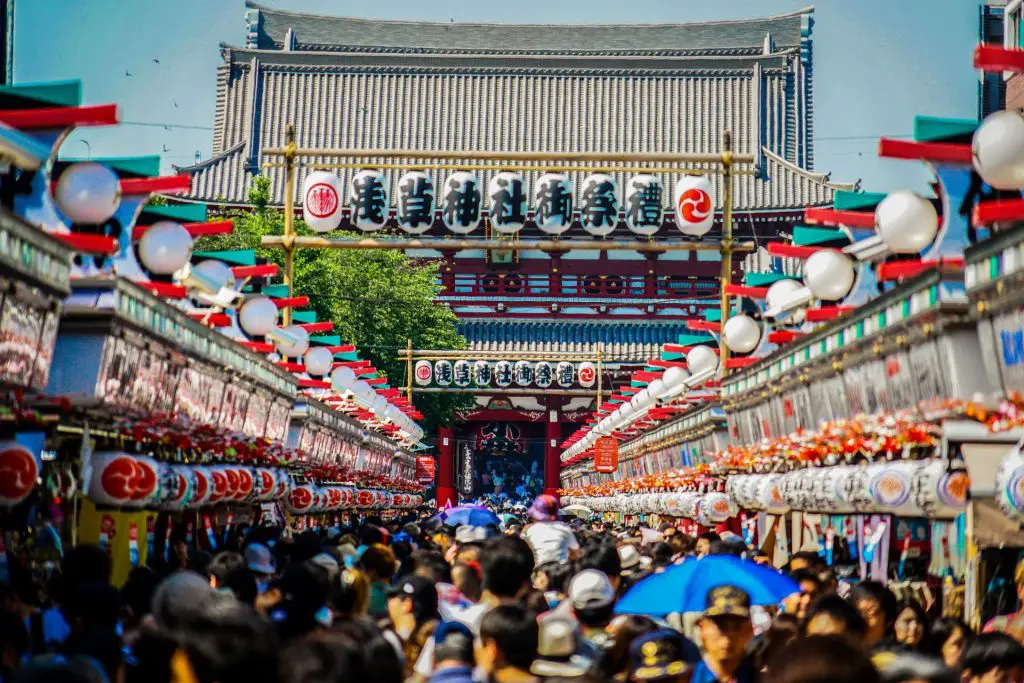
Nakamise dori is a lively traditional shopping street that runs from the iconic Kaminarimon gate right up to Tokyo’s prestigious Sensoji Temple
-
Ginza
An affluent shopping district with posh boutiques and gleaming department stores. Nearly every leading Japanese and international brand name fashion and cosmetics company has a presence here, as well as major electronics brands such as Sony and Apple. You can look for boutiques and designer brand stores at Ginza Six, fine crafts at Takumi, gourmet food items at Akomeya, and stationery and art supplies at Itōya.
-
Shinjuku
Centered around Shinjuku Station, Shinjuku is one of Tokyo’s largest shopping and entertainment districts. Shopping in Shinjuku can be a little overwhelming because several companies’ flagship stores and outlets of Japan’s largest electronics retailers are available here.
-
Shibuya
The entertainment paradise in Tokyo, Shibuya is not only the most energetic area but also a shopping mecca. Alongside every street, there’s a variety of fashion, home, lifestyle, electronic and souvenir shops. The Shibuya 109 is one of the most popular shopping centers and has been a symbol of Tokyo’s young fashion culture for the last two decades. Tokyu Hands, the favourite place of every shopping lover, offers a huge collection of stylish and unique items that will require hours of window-shopping. After being renovated and reopened in the Fall 2019, Shibuya Parco features as the iconic commercial building of Tokyo with nearly 200 stores.
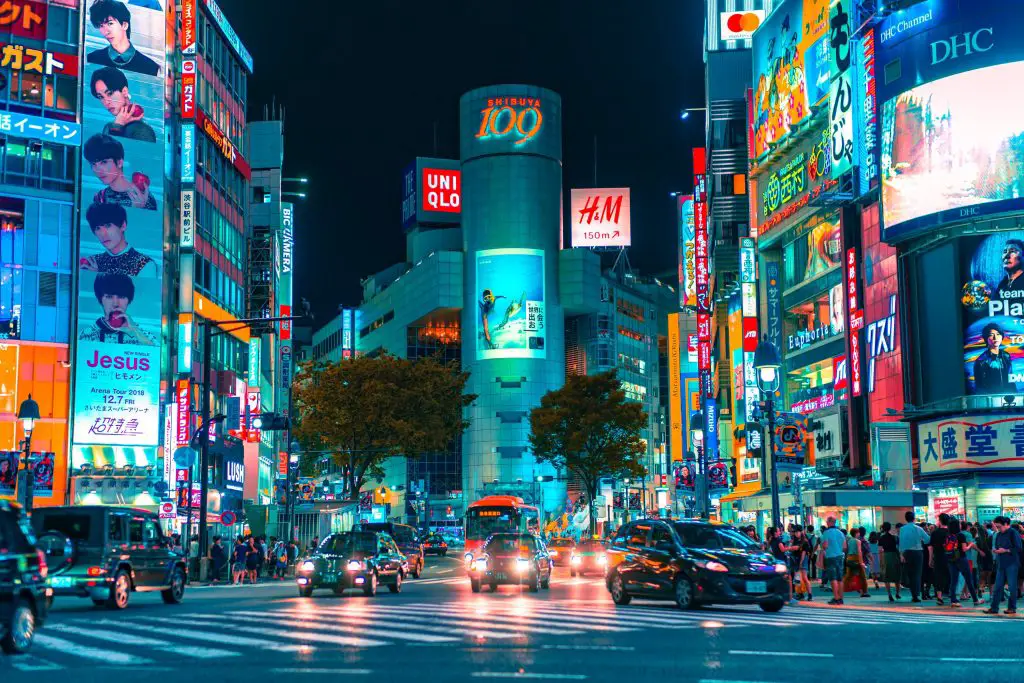
Shibuya is a shopping paradise where you can find latest fashion items with reasonable prices
-
Ikebukuro
Centered aroundJapan’s second busiest train station, Ikebukuro is among the most bustling and eventful districts in Tokyo, aside from the renowned Shinjuku and Shibuya. You can uncover cool stuff at these shopping gems: Seibu, Sunshine City and Tokyu Hands. For Japanese high-quality electronic devices, visit “Bic Camera”.
-
Odaiba
Located in Tokyo Bay, this is an artificial island built in the Edo period. After years of development, Odaiba has risen into a modern and dynamic district. Head to Aquacity, Decks and Diver City shopping malls and Palette Town shopping complex to make the most experience of shopping in Japan.
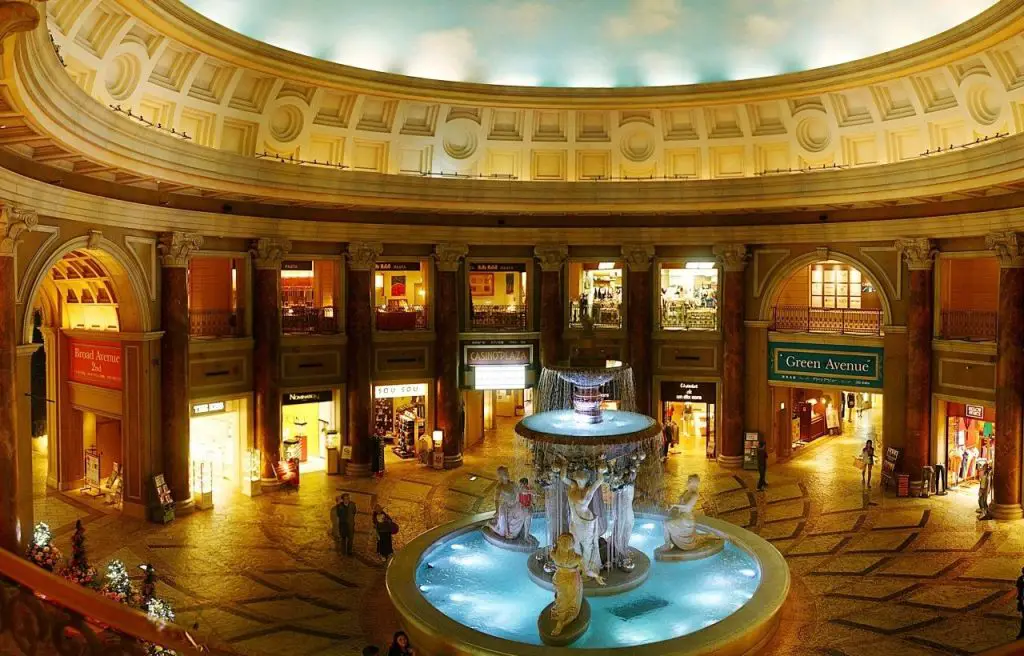
The Palette Town shopping complex with the Venice theme aims at young women
Tokyo shopping tips
- Traditional and small stores may not accept credit cards so carry some cash with you when shopping in Japan.
- Tokyo’s department stores have excellent basement food halls, which are great for finding foodie gifts (or for a mid-shopping treat).
- Popular souvenir items such as yukata, kokeshi dolls and woodblock prints are better to buy at souvenir shops found in districts popular among foreign tourists, such as Asakusa, Akihabara and the Tokyo Skytree.
- The Tsukiji Outer Market which sells fresh seafood in the lively stalls is absolutely paradise for foodaholics.
- For second hand goods such as clothes, tools and antiques, visit flea markets that are held around Tokyo’s temples, shrines and other public venues.
Shopping in Kyoto
There is so much more to do and shop in Kyoto than just temples and shrines. The ancient heart of Japan is home to classic goods, vast electronics and camera emporiums. It’s probably easier to shop here than in Tokyo, because Kyoto is compact and most of the shopping is located right downtown. The city’s two largest shopping districts are the Kyoto Station area and Downtown Kyoto.
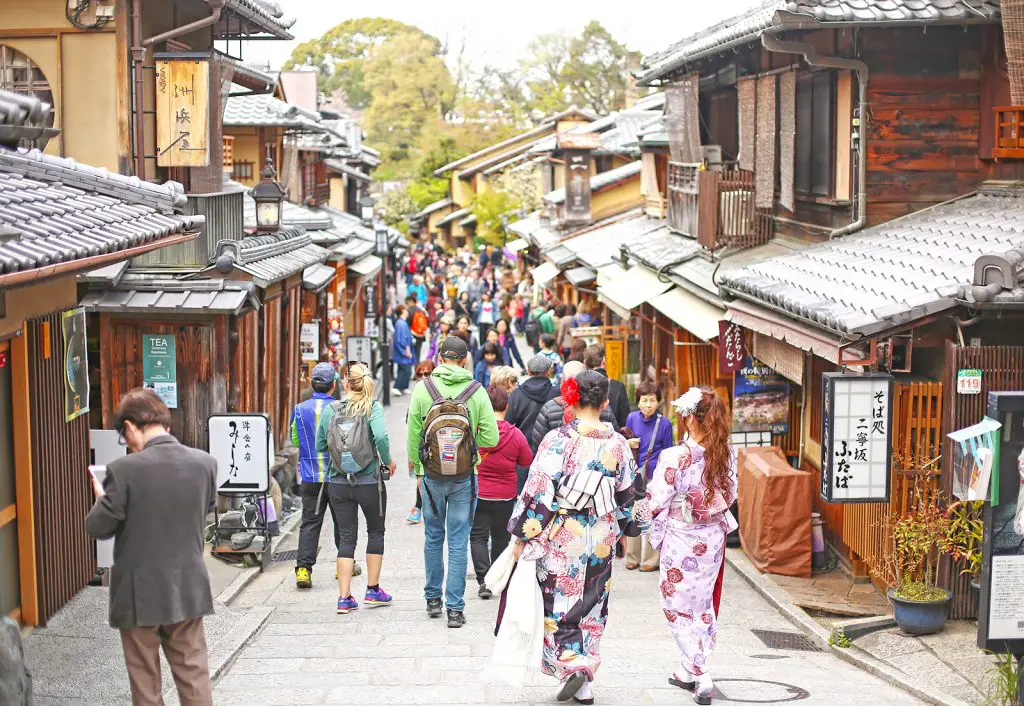
Nishiki Market has all your food needs covered, with over a hundred shops
Things to buy in Kyoto
- Lacquerware
- Washi (traditional Japanese paper)
- Incense
- Ceramics
- Green tea and other Japanese teas
- Kimono
Where to shop in Kyoto
- Daimaru Department Store
- Takashimaya Department Store
- Isetan Department Store
- Nishiki Market
- Kobo-san Flea Market
- Tenjin-san Flea Market
Shopping in Osaka
Osaka is the perfect place to taste delicious foods and purchase upscale, brand name and designer goods with inexpensive thrift shops and discount chains. Shopping in Osaka is known to be rather affordable compared to Tokyo.
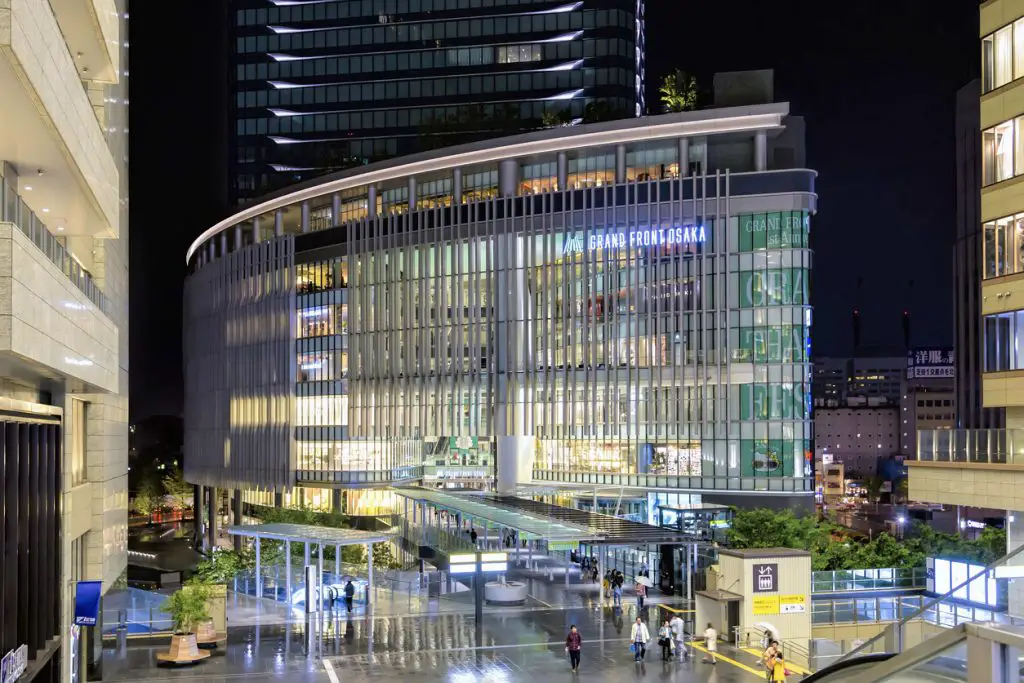
Grand Front Osaka, features a massive 44,000 square meters of shopping space including three buildings
Two main shopping areas are Umeda in the north and Namba in the south. Both areas have an abundance of department stores, extensive underground shopping malls and some of Japan’s oldest shopping arcades. Visit the Dotonbori district to eat-til-you-drop or head to the Shinsaibashi area – a popular spot for youth culture, which dates back to the 18th century. Nearby there’s Amerikamura, the heart of youthful fashions and trends. Besides, for electronic and gaming goods, Nipponbashi’s Den Den Town would be the best.
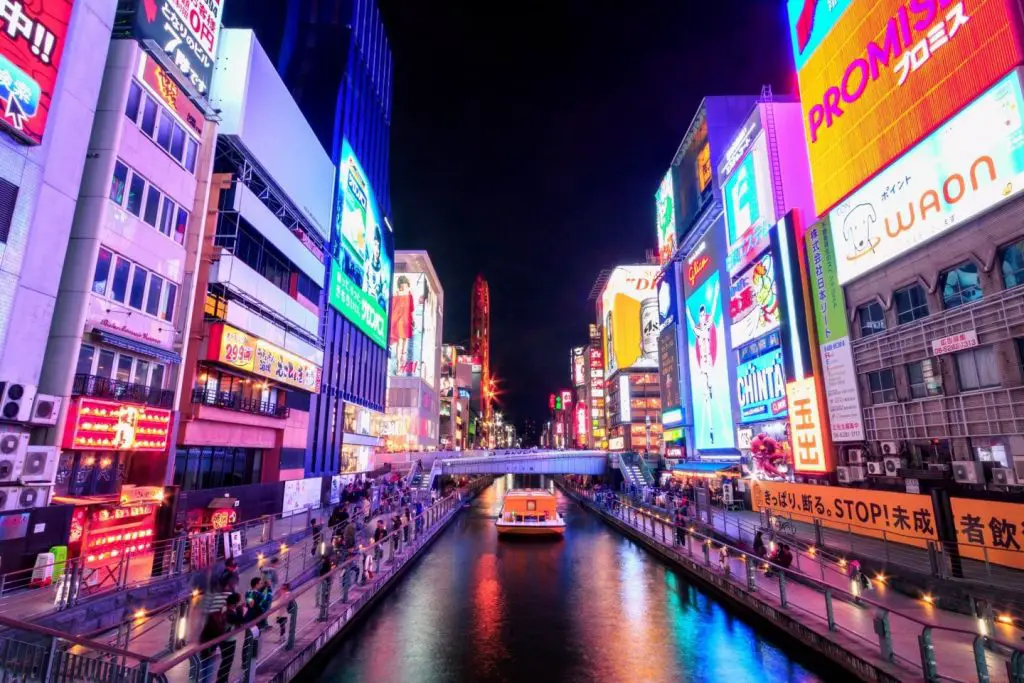
Namba is filled with bustling shopping districts
Where to shop in Osaka
- Daimaru Umeda at Osaka Station
- Lucua & Luca 1100 Department Stores
- Hankyu Umeda Department Store
- Hanshin Department Store Umeda
- Yodobashi Camera – Yodobashi Umeda
- Grand Front Osaka
- Sonezaki Ohatsutenjin-dori Shotengai Shopping Arcade
- Hankyu Higashi Dori Shopping Street
- Shopping in Shinsaibashi
- Amerikamura
- Bic Camera Namba
- Namba Parks Shopping Complex
FAQs
-
Are clothes cheaper in Japan?
This may be a given, but Japanese clothing brands are also much cheaper when bought in Japan, even if you may have the same store in your country. Stop by Uniqlo or GU stores to experience additional savings.
-
What is Japan famous for shopping?
- Matcha products
- Kimonos
- Vending machine toys
- Sake
- Japanese cosmetics
- Ceramics
- Anime and manga
- Origami
- Woodblock print
- Wind chimes
-
Is Tokyo cheap for shopping?
Tokyo is among the most exorbitant cities in the world. But for cheap finds, you could give these places a try:
- The streets of Isezakicho
- Mitsui Outlet Park: brand new items
- Supermarkets: food, household and imported goods
- Harajuku-Omotesando Alley: souvenirs
Conclusion
Shopping in Japan could be a bit overwhelmed so hope you find this location guide helpful!


